Contextual Menus of 3D Model Tree Elements |
  
|
By pointing to an element in the model tree, you can access the context menu (by pressing ![]() ).
).
The context menu consists of standard commands for working with element (Edit, Copy/Paste, Parameters and so on) and with 3D Model window.
The context menus may vary depending on the element selected in the 3D Model window.
Besides the common commands for managing the selected element, the context menu contains some additional commands for working with particular Bodies, operations and the model tree as a whole:
Delete Body (for Bodies). This command serves to delete all the operations which are part of this Body's creation history. In addition, all parent 3D construction elements of this Body can be deleted, or just those parent elements that are not referenced by other created Bodies.
Delete (for operations and auxiliary 3D elements). The command deletes the selected operation or 3D construction element.
More information about deletion of bodies and other elements can be found in the Deleting Elements section.
Detail command allows to unload a body or a fragment from the assembly into a separate file.

Mates:
•Fix component. Fixates the position of the selected body in 3D scene, so that mates added later do not affect the body's position.
See more at the Creating Mates section.
•Keep Mate Transformations. Converts all non-kept mate transformations of the selected body into kept ones.
See more at the Mate Transformations section.
•Remove mate transformations. Deletes all mate transformations of the selected body, so that it returns to initial position.
See more at the Mate Transformations section.
Rollback model option allows to rollback a three-dimensional model to the level of the specified operation.
More information about this option can be found in the Rollback Model section.
Retain geometry after recalculation option allows you to save intermediate geometry for the operation, thereby accelerating transition to its editing.
More information about this option can be found in the Editing Techniques chapter.
Selecting objects with the help of the model tree is sometimes very convenient in many commands, for example, when selecting this element in the 3D window is difficult for some reasons.
The Visibility group contains commands for controlling the visibility of elements.
More information about these commands can be found in the Using Contextual Menu for Controlling Elements Visibility section.
Suppress (for operations). This command excludes the operation from regeneration. This allows user to temporarily remove 3D model elements. To select a suppressed operation, use the "3D Model" window or do the element search.
Only selected elements will be displayed in the tree upon using Go to elements command. Status switching options ![]() ,
, ![]() ,
, ![]() are used to return to the normal mode.
are used to return to the normal mode.
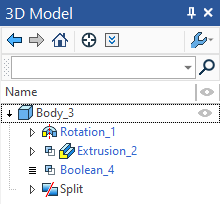
You can create a separate window for the selected elements using Open in new window command. This window can be moved around the screen. It retains all the functionality of the 3D Model window. This window eliminates having to move the cursor across the screen to select an element in the model tree.
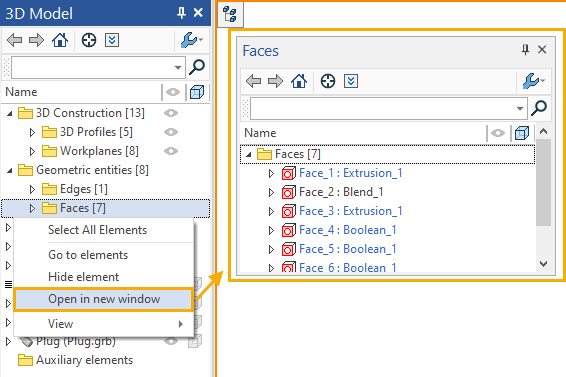
After using Hide element command, the selected elements will not be displayed in the model tree. For example, you can hide unused items, so as not to be distracted by them.
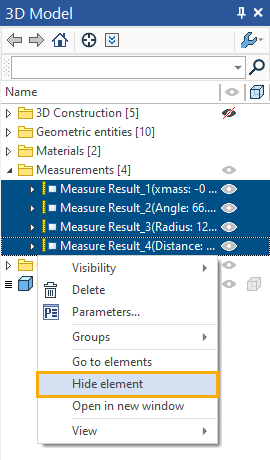
If the flag Show hidden elements is active, all hidden elements are displayed but greyed. The elements names are shown in italic to distinguish them from the suppressed elements.
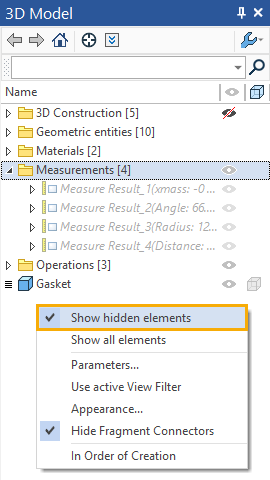
To display elements again you may use Show element command or you can show all items at once using the Show all elements button.
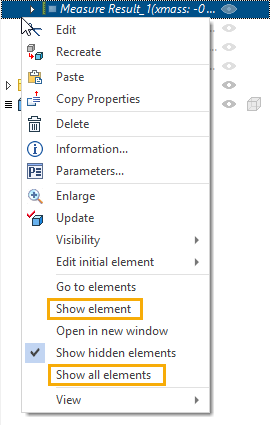
The last item of the menu is the View, which contains the same drop-down menu of tree parameters, as invoked via the ![]() Parameters button in the toolbar.
Parameters button in the toolbar.
